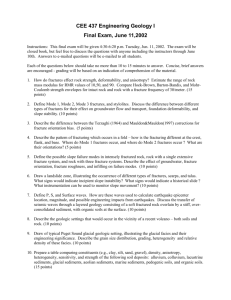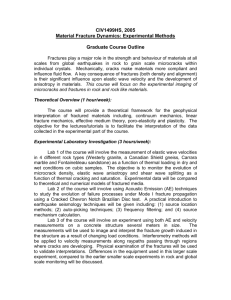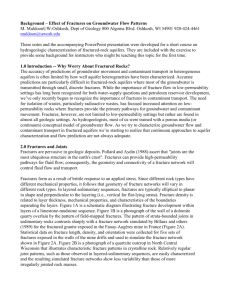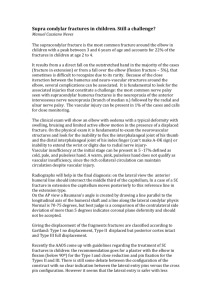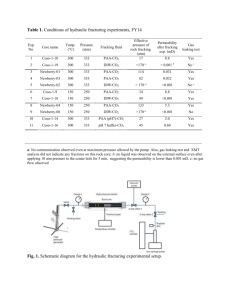Click here - DFNE 2014
advertisement
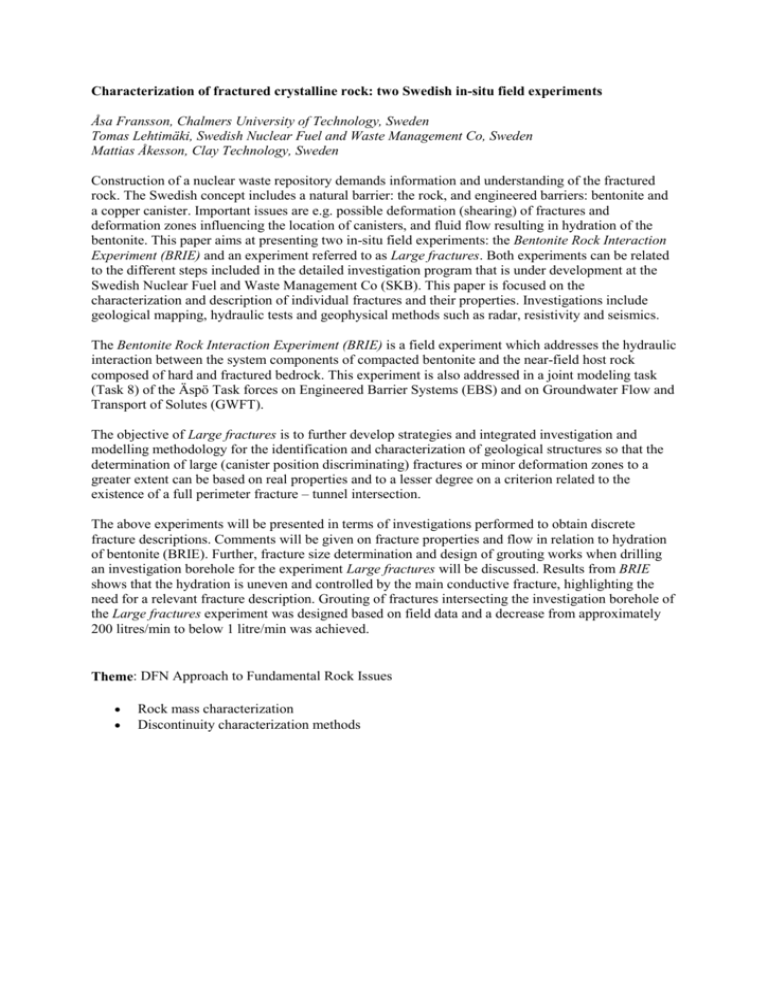
Characterization of fractured crystalline rock: two Swedish in-situ field experiments Åsa Fransson, Chalmers University of Technology, Sweden Tomas Lehtimäki, Swedish Nuclear Fuel and Waste Management Co, Sweden Mattias Åkesson, Clay Technology, Sweden Construction of a nuclear waste repository demands information and understanding of the fractured rock. The Swedish concept includes a natural barrier: the rock, and engineered barriers: bentonite and a copper canister. Important issues are e.g. possible deformation (shearing) of fractures and deformation zones influencing the location of canisters, and fluid flow resulting in hydration of the bentonite. This paper aims at presenting two in-situ field experiments: the Bentonite Rock Interaction Experiment (BRIE) and an experiment referred to as Large fractures. Both experiments can be related to the different steps included in the detailed investigation program that is under development at the Swedish Nuclear Fuel and Waste Management Co (SKB). This paper is focused on the characterization and description of individual fractures and their properties. Investigations include geological mapping, hydraulic tests and geophysical methods such as radar, resistivity and seismics. The Bentonite Rock Interaction Experiment (BRIE) is a field experiment which addresses the hydraulic interaction between the system components of compacted bentonite and the near-field host rock composed of hard and fractured bedrock. This experiment is also addressed in a joint modeling task (Task 8) of the Äspö Task forces on Engineered Barrier Systems (EBS) and on Groundwater Flow and Transport of Solutes (GWFT). The objective of Large fractures is to further develop strategies and integrated investigation and modelling methodology for the identification and characterization of geological structures so that the determination of large (canister position discriminating) fractures or minor deformation zones to a greater extent can be based on real properties and to a lesser degree on a criterion related to the existence of a full perimeter fracture – tunnel intersection. The above experiments will be presented in terms of investigations performed to obtain discrete fracture descriptions. Comments will be given on fracture properties and flow in relation to hydration of bentonite (BRIE). Further, fracture size determination and design of grouting works when drilling an investigation borehole for the experiment Large fractures will be discussed. Results from BRIE shows that the hydration is uneven and controlled by the main conductive fracture, highlighting the need for a relevant fracture description. Grouting of fractures intersecting the investigation borehole of the Large fractures experiment was designed based on field data and a decrease from approximately 200 litres/min to below 1 litre/min was achieved. Theme: DFN Approach to Fundamental Rock Issues Rock mass characterization Discontinuity characterization methods
